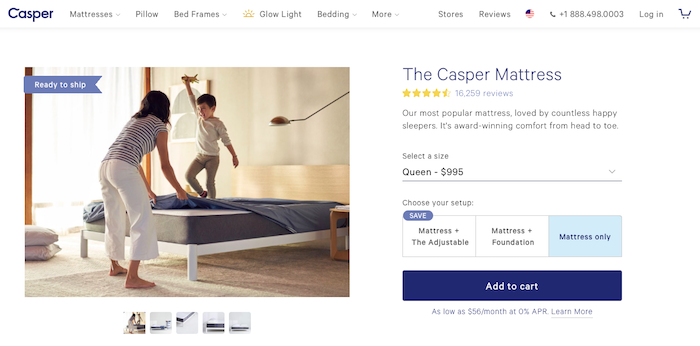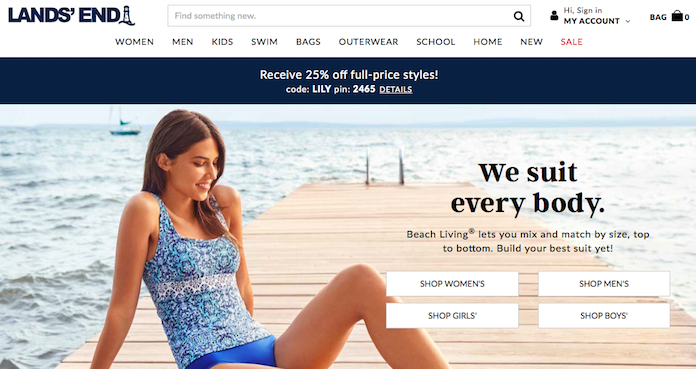Returns Can Benefit Retailers – It’s All About Your Approach
Broadly speaking, there are two ways for ecommerce retailers to boost profit: increase sales or improve efficiency. In the case of product returns, merchants have the opportunity to do both. On the customer-facing side of the business, a smooth and easy return process builds customer loyalty and encourages repeat purchases. On the backend, new tools are emerging to manage the return process, making it more efficient for internal teams to handle it.
Until recently, many merchants viewed returns as an unavoidable business loss. But now this attitude is shifting. Through new return policies that reduce customer risk and help convert sales, to third-party tools that administer returns, retailers are working returns to their advantage. Here’s how.
Site Frontend:
Sell to Customers on a Personal Level
Shoppers want to be assured that they can buy, and if it doesn’t work out, the retailer will support their decision. With this in mind, returns become a way to dialogue with your customers. The frontend techniques discussed here are a way to converse with your shoppers – and improve their experience with your online brand.

Try Before You Buy
Until now, one of the main barriers for customers in making an online purchase has simply been that they don’t know what to expect. Further, they’re not willing to take the risk and buy. Particularly with pricier items or more specialty products, it can be hard for shoppers to take the leap. In recent years, several direct-to-consumer brands have taken away this barrier through Try Before You Buy policies.
Casper, the mattress retailer, promotes a “Risk-Free Trial.” The company promises customers that they can buy a Casper mattress, sleep on it for 100 nights, and still return it. Even after 100 nights, the company will come and pick up the mattress to be returned and refund the shopper’s money to the penny.
Another example, ThirdLove, the bra retailer, encourages customers to: “Wear it. Wash it. If you don’t love it for any reason, we’ll take it back.” In both of these cases, mattresses and bras, the companies are selling something that is deeply personal. These are also products that people get comfortable with over time. The first night on a Casper mattress will feel different than a month later. The same is true for underwear, agreed?
Customer Service = the New Marketing

So how do these companies manage to offer such generous return policies? Along their retail journey, they had an attitude shift. As first declared by Craig Adkins, Vice President of Services and Operations at Zappos, successful retailers increasingly work from the idea that “customer service is the new marketing.”
Imagine that a merchant launches an expensive marketing campaign to attract new customers. The good news is the campaign works, and many new people buy from the site. In a short time, however, some of the marketing effort gets erased as some of the customers return their products. The retailer doesn’t follow up with these shoppers; they just keep working to attract new purchasers.
Wouldn’t there be a greater return on investment if the merchant could work with the customers to keep or exchange their purchases?
Now imagine a scenario where a new customer receives the product – and a conversation with the retailer begins.
Going back to ThirdLove, after a customer receives their purchase, the retailer follows up with a text to the customer. It’s written by a “ThirdLove Fit Stylist,” and it asks how the customer is liking their recent order. If there is an issue, ThirdLove offers to facilitate a return or exchange immediately. This is a great example of modern customer service. The text is friendly and helpful, and encourages the customer to write back via text anytime. This kind of personalized support goes a long way in creating loyalty.
The retailer’s open conversation with customers demonstrates the brand’s confidence in their products. The company has no need to hide anything. On the contrary, ThirdLove’s willingness to communicate shows their certainty that shoppers will love their undergarments.
Returns Become Donations to Those in Need
It’s worth noting that both Casper and ThirdLove donate their “gently used” product returns to people in need. While it’s likely that some returns don’t qualify as gently used, a good amount surely do. Rather than assuming a loss on the returns, turning them into donations can lead to business tax benefits. It’s also good for the environment, as the returns aren’t needlessly sent to a landfill. Best yet, the products can be used by people who need them.
Site Backend:
Third-Party Tools Help Retailers Manage Returns
The world of ecommerce returns is changing rapidly. Thankfully, several companies are developing new features to help manage returns on the operational side. These backend tools can minimize the workload for your customer service team. Also, in some cases, they may lead to new sales.
We’re highlighting a few here to help you brainstorm how these innovations could ease the return process for your business. Which one is right for you? That depends on your platform, 3PL, and ERP, among other things. Before making a decision, you’ll want to analyze these tools (and others) with your development team. But if you’re frustrated by the returns process in your company, just know that a solution to your problem exists.
Return Logic
Exclusively for Shopify and Shopify Plus merchants, Return Logic is an app that integrates with ecommerce stores to streamline returns. Retailers are able to easily refund shoppers through their original payment method. (This includes Amazon Payments and Shopify Payments.) Return Logic also helps retailers process exchanges or issue gift card refunds. The process is easy, but it’s not automatic. Retailers are prompted to approve every transaction. After a 30-day free trial, the app costs $10/month.
Returnly
Returnly is a third-party feature that automates approximately 90% of a retailer’s returns. (The company notes that there are sometimes outliers who will need a more custom response.) One of the key components of Returnly is that they separate the refund from the return. Meaning: shoppers don’t have to wait 2-3 days (or weeks!) for the return to clear in order to get their money back. Returnly handles the financial transaction, and they instantly credit the shopper for the amount of the return. Oftentimes this instant refund incentivizes the person to purchase again from the store.
If a shopper does not return the product, Returnly assumes the cost. In exchange for this service, Returnly charges a sliding scale software fee and takes a small commission on new purchases from the instant refunds.
Loop
Also an app for Shopify and Shopify Plus merchants, Loop incorporates many benefits similar to Return Logic and Returnly. But they add in an interesting twist: differently-priced exchanges. For example, if a customer agrees to use their instant refund immediately, they get a higher amount of store credit. If they decide to wait to use it, the amount will be a little less. Inquire with Loop directly about pricing.
Return Magic
The Return Magic app features many of the selling points of its competitors. We’re choosing to include it on the short list for an important reason: it charges merchants per return. Their prices are on a sliding scale. If a retailer has 10 returns or less per month, it’s $1/return. Between 20 and 50 returns per month, and it’s $.85/return. As an example, a retailer can automate 40 returns in a month for $34. This could be a good, cost-effective solution for retailers who are growing their business and want a solution to scale with them.
Last Word:
Detect and Stop Ecommerce Return Fraud

Lastly, we’ve assumed that the process of ecommerce returns is usually a fair and honest exchange between retailers and customers. In large part, it is. It would be naive, however, to ignore that some people view returns as a potential way to commit fraud. It’s crucial to be vigilant against these bad actors. If you’re on Shopify Plus, one way to do this is to set up Shopify Flow to alert you to any suspicious activity.
Another way to address fraud is to remember that even the most generous policies can be revoked. For example, for decades, Lands’ End famously had a lifetime return policy. Customers could purchase something and return it years later. Company executives noted that a “small but growing number of customers” were abusing the policy. Thus, in 2018, Lands’ End introduced a one-year limit on returns. At the same time, they noted that if a customer has a strong reason to return an item after the year deadline, the company will review it on a case-by-case basis.
Casper, ThirdLove, and Lands’ End are all examples of retailers who have crafted a return policy that works for them. Further, entrepreneurs are working to help merchants solve the issue of returns through new tools to manage them. By knowing your company’s needs in processing returns, and selecting the right mix of operational partners, your company can find benefits in returns, too.
Our Returns Reduction Sprint is designed to not only reduce returns, but help you keep more revenue, reduce oversights, accelerate improvements, and align profit with sustainability values. Get in touch to see how our team can help reduce unnecessary returns and improve margins.
